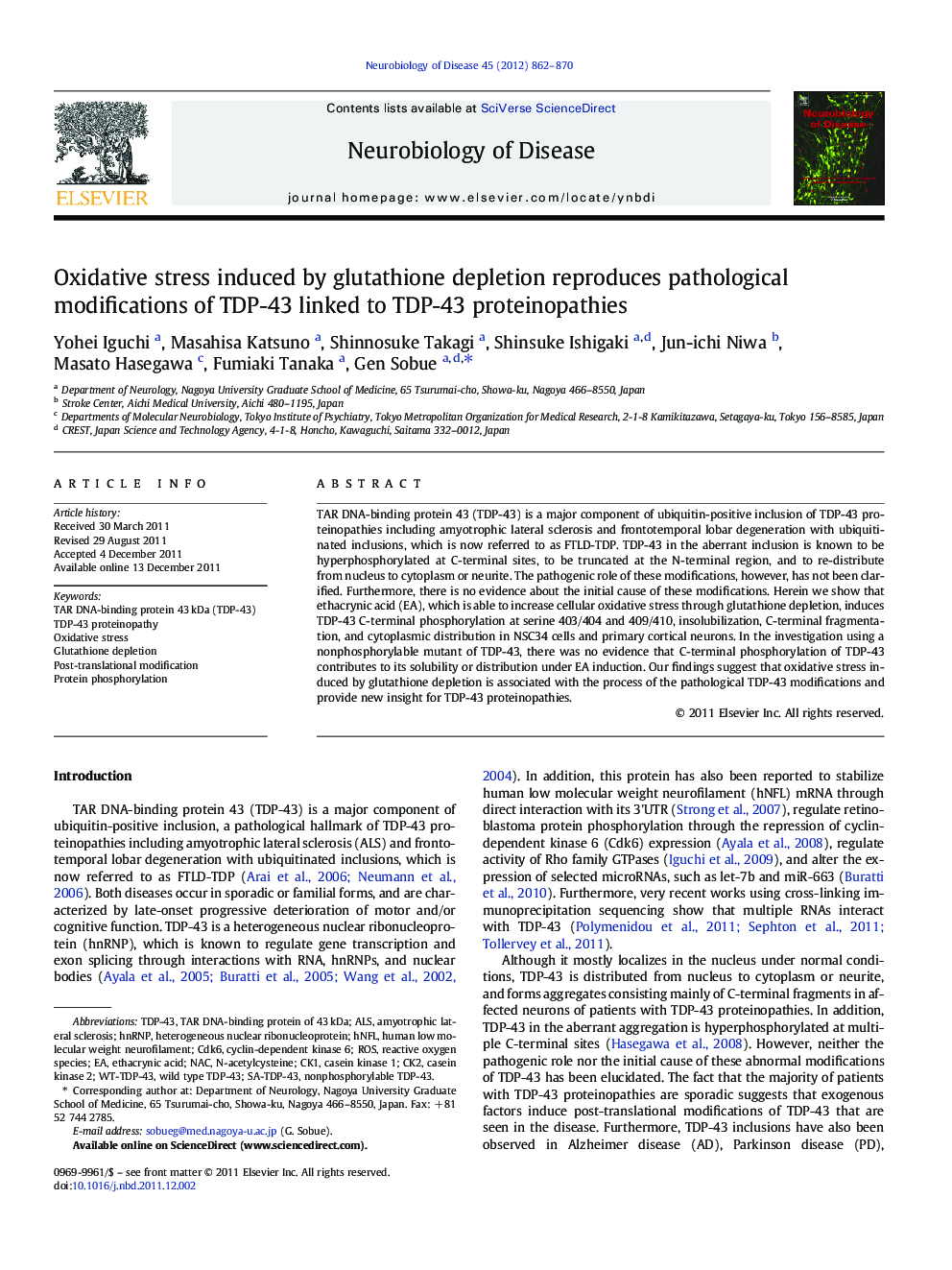| Article ID | Journal | Published Year | Pages | File Type |
|---|---|---|---|---|
| 6022658 | Neurobiology of Disease | 2012 | 9 Pages |
TAR DNA-binding protein 43 (TDP-43) is a major component of ubiquitin-positive inclusion of TDP-43 proteinopathies including amyotrophic lateral sclerosis and frontotemporal lobar degeneration with ubiquitinated inclusions, which is now referred to as FTLD-TDP. TDP-43 in the aberrant inclusion is known to be hyperphosphorylated at C-terminal sites, to be truncated at the N-terminal region, and to re-distribute from nucleus to cytoplasm or neurite. The pathogenic role of these modifications, however, has not been clarified. Furthermore, there is no evidence about the initial cause of these modifications. Herein we show that ethacrynic acid (EA), which is able to increase cellular oxidative stress through glutathione depletion, induces TDP-43 C-terminal phosphorylation at serine 403/404 and 409/410, insolubilization, C-terminal fragmentation, and cytoplasmic distribution in NSC34 cells and primary cortical neurons. In the investigation using a nonphosphorylable mutant of TDP-43, there was no evidence that C-terminal phosphorylation of TDP-43 contributes to its solubility or distribution under EA induction. Our findings suggest that oxidative stress induced by glutathione depletion is associated with the process of the pathological TDP-43 modifications and provide new insight for TDP-43 proteinopathies.
⺠Oxidative stress induces TDP-43 phosphorylation. ⺠Oxidative stress induces TDP-43 insolubilization and C-terminal fragmentation. ⺠Oxidative stress induces cytoplasmic distribution of TDP-43. ⺠These changes reproduces the pathological features of TDP-43 proteinopathies.
